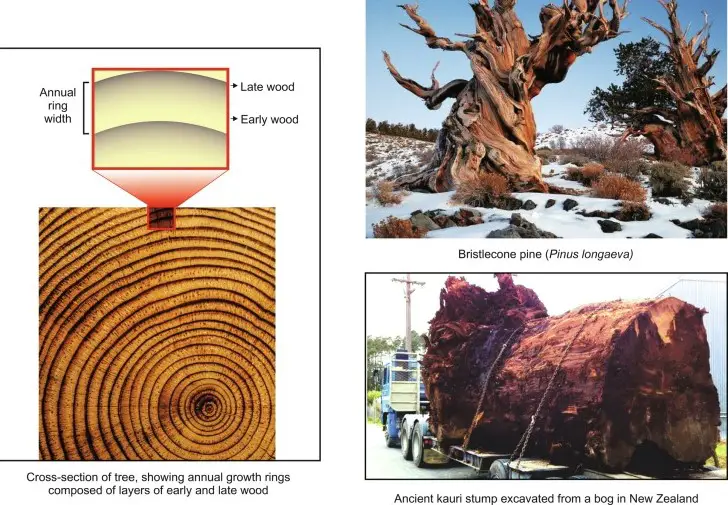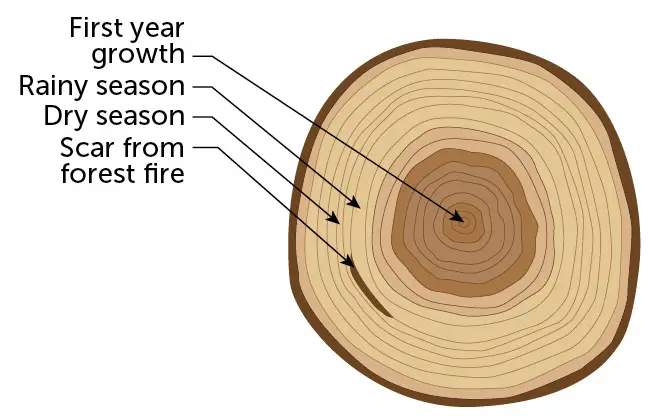The study of tree rings, or dendrochronology, has been used for many years to help us understand history and climate. But did you know that this same method can also be used to study climate change? Dendroclimatology is a subset of dendrochronology that focuses on understanding past and present climate patterns.
In this blog, we will explore the differences between dendrochronology and dendroclimatology and how they are used to understand climate.
Comparison of the differences between dendrochronology and dendroclimatology

Dendrochronology and dendroclimatology are two closely related scientific disciplines that are often confused with one another. At a high level, the primary difference between the two is that dendrochronology is the study of time in relation to the growth of trees, while dendroclimatology is the study of climate in relation to tree growth. In both cases, tree rings are used as a proxy to determine past climate information and age, though dendrochronology relies on the concept of crossdating to ensure accuracy.
Crossdating is the practice of matching tree rings in one sample to the same pattern in another sample, allowing scientists to identify a timeline of events. Dendroclimatology, on the other hand, uses tree rings to identify past climates.
By studying the relationship between tree ring widths and climate patterns, scientists can gain insight into past climates and how they have changed over time.
The benefits of utilizing dendrochronology and dendroclimatology
Dendrochronology and dendroclimatology are two branches of science that can provide us with invaluable insights into the past. Both are based on the study of tree rings, but they differ in their objectives and the information they can provide us. Dendrochronology is the study of tree rings to date events and determine the age of artifacts.
By analyzing the sequence of tree rings, scientists can accurately date when a tree was cut, when a building was constructed, or when an archaeological site was used. Dendroclimatology, on the other hand, is the study of tree rings to uncover past climate conditions.
By analyzing the width of tree rings, scientists can learn about temperature, precipitation, and other climate variables over the years. Therefore, by utilizing both dendrochronology and dendroclimatology, we can gain a better understanding of past events and climate conditions.
Common applications of dendrochronology and dendroclimatology
Dendrochronology and dendroclimatology are two closely related scientific disciplines that are used to study and understand the past. Dendrochronology is the study of tree-rings and the climate conditions that created them. On the other hand, dendroclimatology is the study of tree-rings to determine past climate conditions.
The main difference between the two is that dendrochronology focuses on the tree-rings themselves, while dendroclimatology focuses on the climate that created them. Both disciplines can be used to study a variety of topics, including the past climate of a region, the timing of past natural disasters, and the effects of human activities on the environment.
Additionally, both disciplines are used to help determine the age of archaeological sites and artifacts. In short, dendrochronology and dendroclimatology are powerful tools for understanding the past and can help us better understand our world today.
Advantages and disadvantages of dendrochronology and dendroclimatology
Dendrochronology and dendroclimatology are both valuable methods used to understand the past climate and environment. They both rely on the analysis of tree rings to provide valuable insights into the history of climate and environment.
Dendrochronology is the study of the exact age of tree rings, and it uses the pattern of growth rings in trees to determine the age and climate conditions of a particular sample. Dendroclimatology, on the other hand, is the study of past climate conditions based on the analysis of tree rings.
This method uses the patterns of tree rings to infer how temperature, precipitation, and other climate characteristics have changed over time. In essence, dendrochronology is the study of the exact age of tree rings, while dendroclimatology is the study of past climate conditions based on the analysis of tree rings.
Further reading and resources
Dendrochronology and dendroclimatology are both related disciplines of tree-ring studies, but they are different in their focus. Dendrochronology is the study of the annual growth rings of trees to interpret past climates and other environmental conditions.
Dendroclimatology, on the other hand, uses these data to examine climate variability over a period of time. It is used to analyze the relationship between climate and tree growth, and to determine the impact of climate variability on the growth of trees.
This information can be used to understand how climate change has impacted the growth of trees and other plants in the past.
Bottom Line
In conclusion, the difference between dendrochronology and dendroclimatology is that dendrochronology is the study of patterns in tree rings in order to reconstruct past climates, while dendroclimatology uses tree rings to interpret modern climatic conditions. Both disciplines are important for understanding the past and present climate and have been used in a variety of studies.

